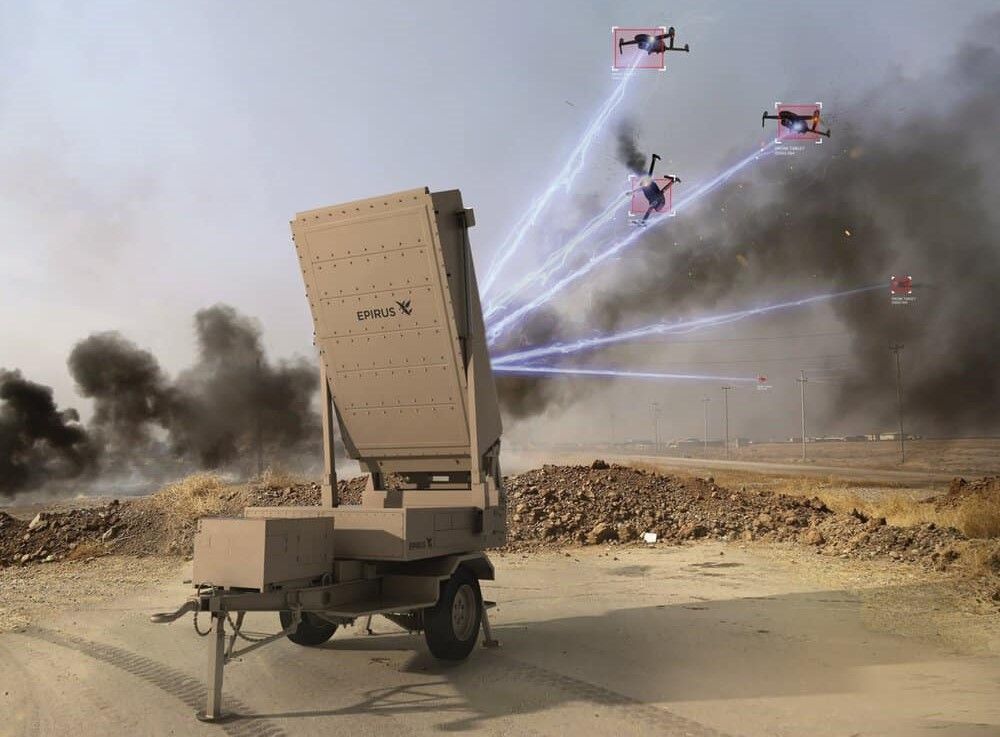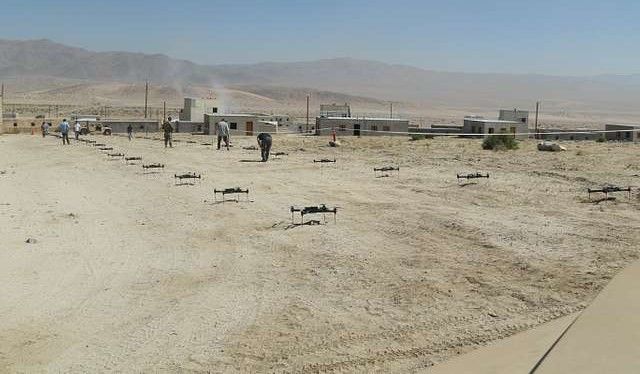US Marines Invest in Counter-Drone Swarm System
How one arms developer is using innovative technology to combat incoming drone attacks.

Given the offensive firepower of airborne drones in the skies over Ukraine, many military analysts are looking at how artillery, tanks, and infantry will be able to protect themselves in future conflicts.
The answer, according to the Pentagon, may lie with high-powered microwave systems that can melt incoming projectiles, such as swarms of enemy drones.
This belief was made public with the recent announcement that the US Marine Corps has invested $66 million in the long-pulse, high-power microwave technology known as Leonidas Expeditionary. A system created by the company Epirus which “can drop swarms of drones with massive and pointed walls of electromagnetic energy.”

To date, there are four different versions of the Leonidas system. The latest is the Expeditionary Directed Energy Counter-Swarm (ExDECS), a weapon which Epirus spokesperson Andrew Wargofchik defines as being on the smaller side, but still capable of ‘swarm defeat.’
It is transportable (earlier versions were attached to vehicles and even drones), boasting a ‘low physical signature.’
When combined, it is a defensive wall that can destroy multiple incoming drones, a fact that as currently being seen in the Middle East, is an immensely powerful asset to have.

The US Marine’s investment follows the November 2023 announcement by the US Army that it was also investing in an high-powered microwave prototype developed by Epirus.
Based on swarm technology, the system is designed to use a combination of lasers, hard-kill intercepting projectiles, and high-powered microwaves to provide an “Indirect Fire Protection Capability that will protect fixed and semi-fixed sites from drones as well as rockets, artillery and mortars and cruise missiles.”
According to a report in the US-based Army Times, the investment is seen as, “… as a cost-effective way to counter electronic threats as the Army grappled with using expensive missiles to take out cheap drone threats.”
Successful testing has now proven the system’s capability against a variety of incoming airborne targets. This is due to the laser-based system which can produce rapid fire on targets with ‘near-instant effects,’ all without overheating and the need to reload.
“Operators can precisely and safely control the system’s HPM pulse to prosecute single UAS and swarms, depending on the threat environment,” boasts an Epirus company statement.
However, challenges do still remain before drone swarms become a ubiquitous part of regular armed forces – most notably the ability to produce enough drones to meet military demand. A fact which Pentagon officials frequently touch upon as they evaluate the West’s inability to match the drone output of China if an arms race for drone swarms becomes a reality.

While many fear the increasing use of drones and autonomous systems as an unacceptable technological advance in warfare, there is a growing opinion that swarms, robots, and other futuristic developments will instead be seamlessly integrated with human soldiers, creating a powerful hybrid force that combines the speed, precision, and the tireless nature of machines with the adaptability, critical thinking, and strategic decision-making of human beings.
For example, drones equipped with sophisticated sensors and weaponry will function as force multipliers, scouting ahead, providing real-time intelligence, and engaging targets with lethal accuracy. Meanwhile, human soldiers will work in tandem with these robotic counterparts, using their judgment and combat experience to assess situations, coordinate manoeuvres, and make split-second choices that machines cannot.
For this reason, it is thought that drones and robots will not operate in isolation, but will be an extension of human soldiers, enhancing their capabilities and providing them with an unparalleled technological edge on the modern battlefield.
A combined way of going to war (half-human, half-beast) which Epirus’s CEO has nicknamed ‘centaur warfare.’
Photo credit: Wikimedia, futuroprossimo, Flickr, & Nara

